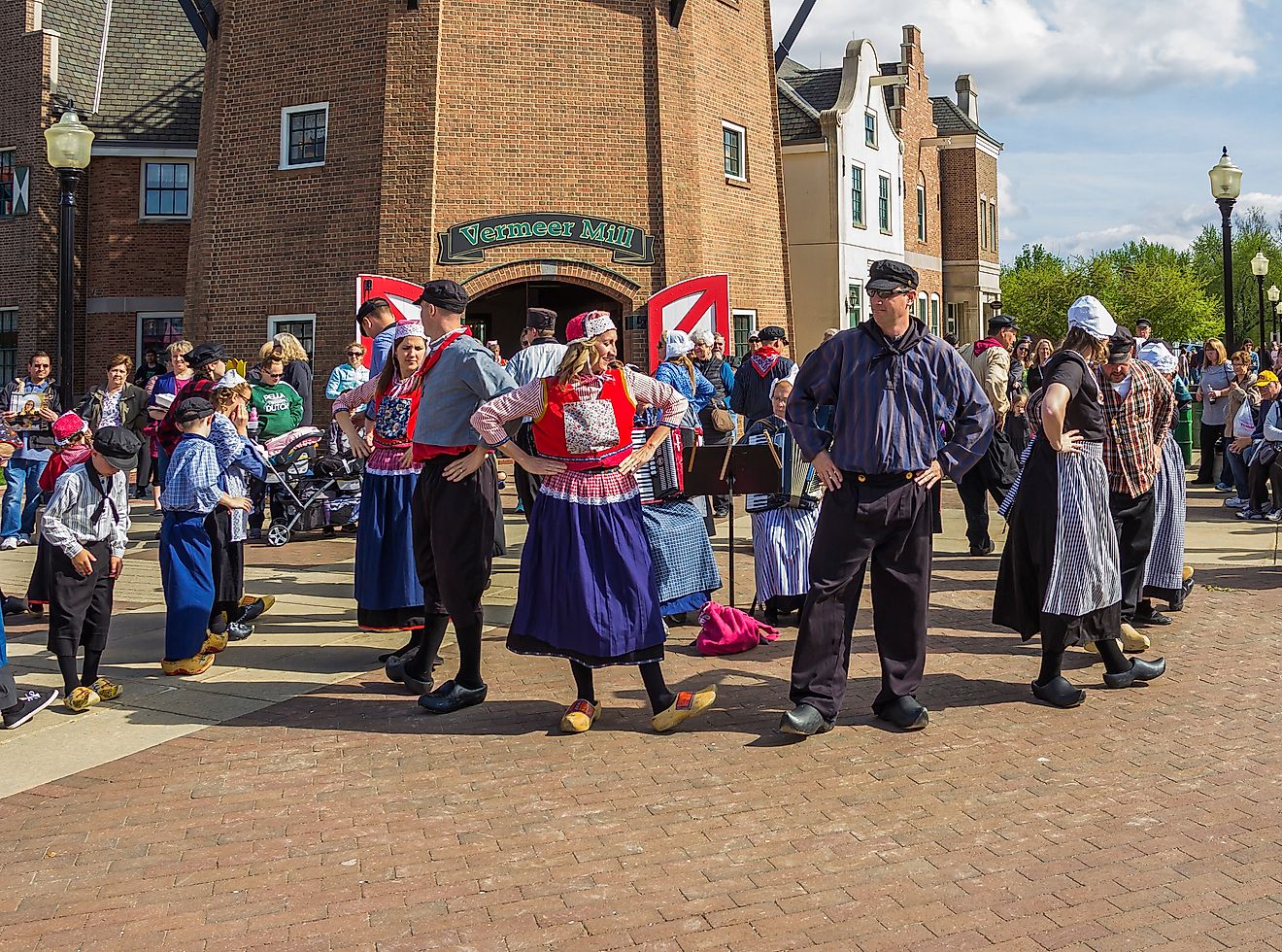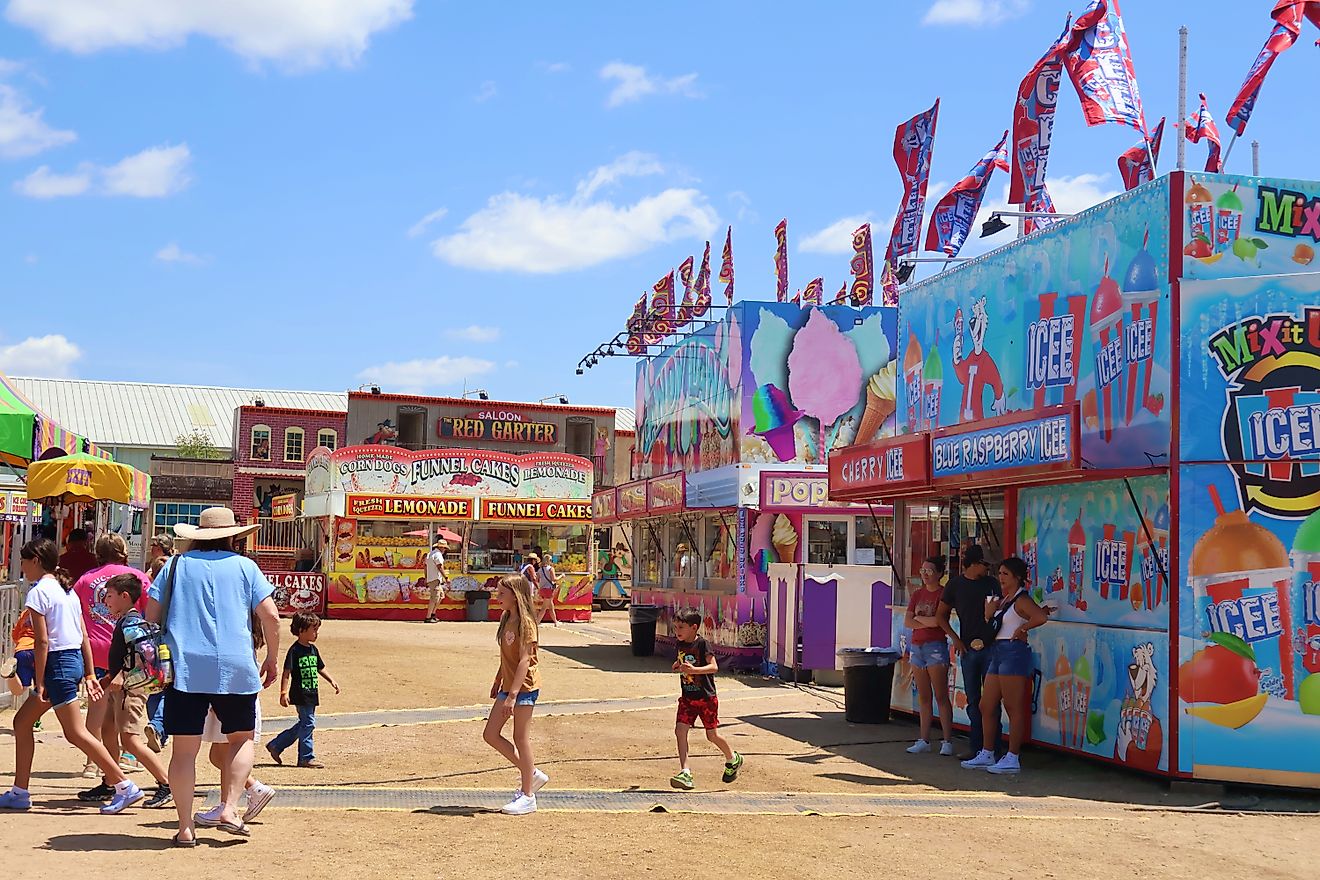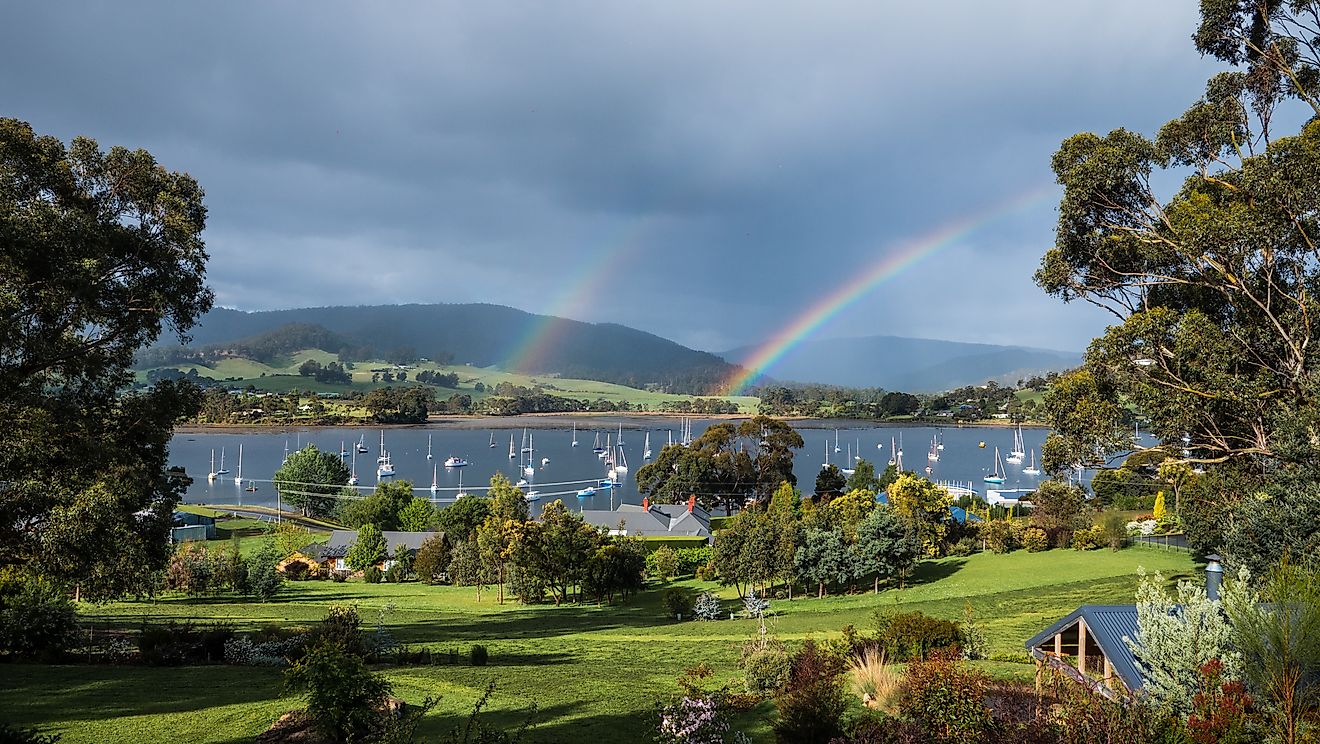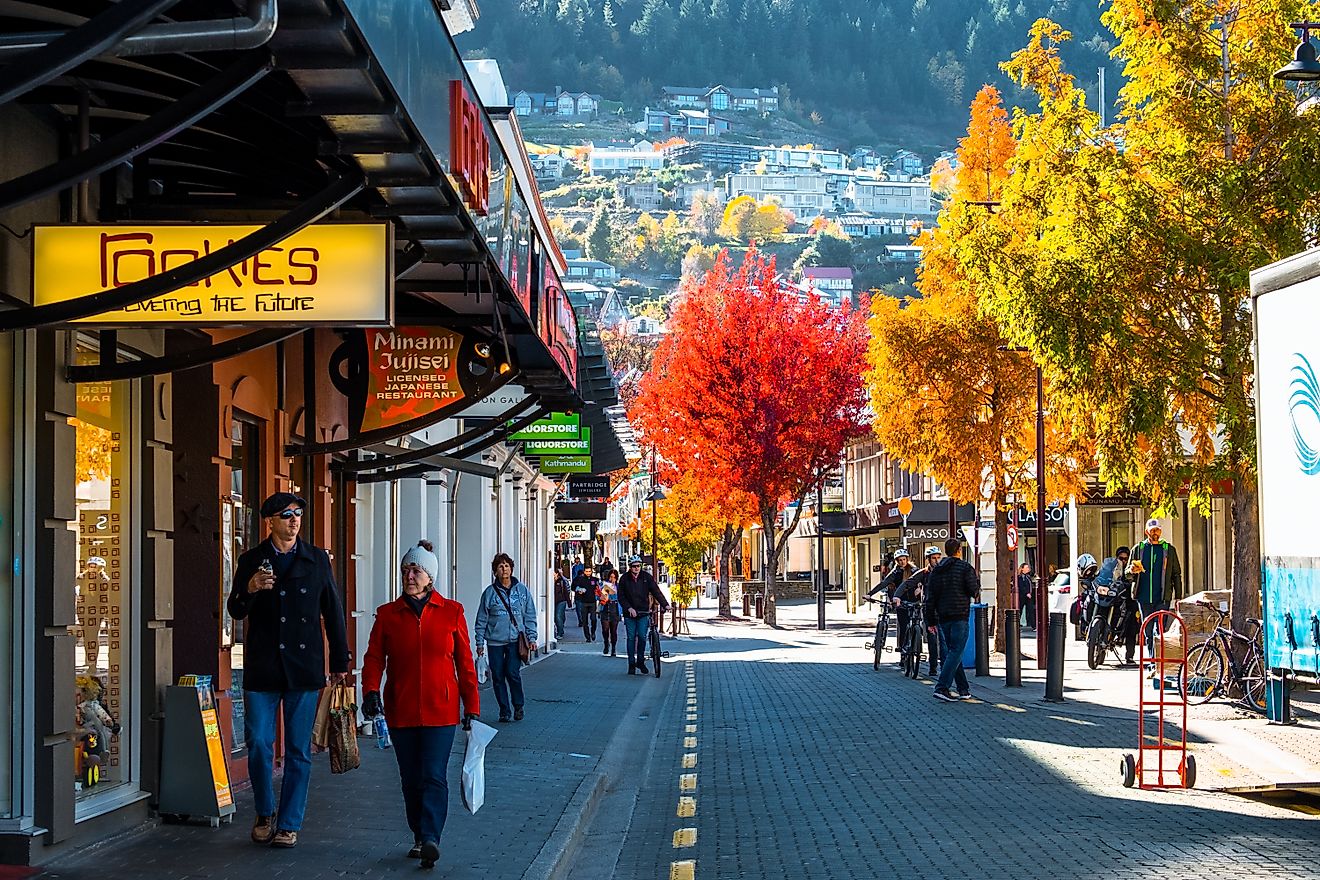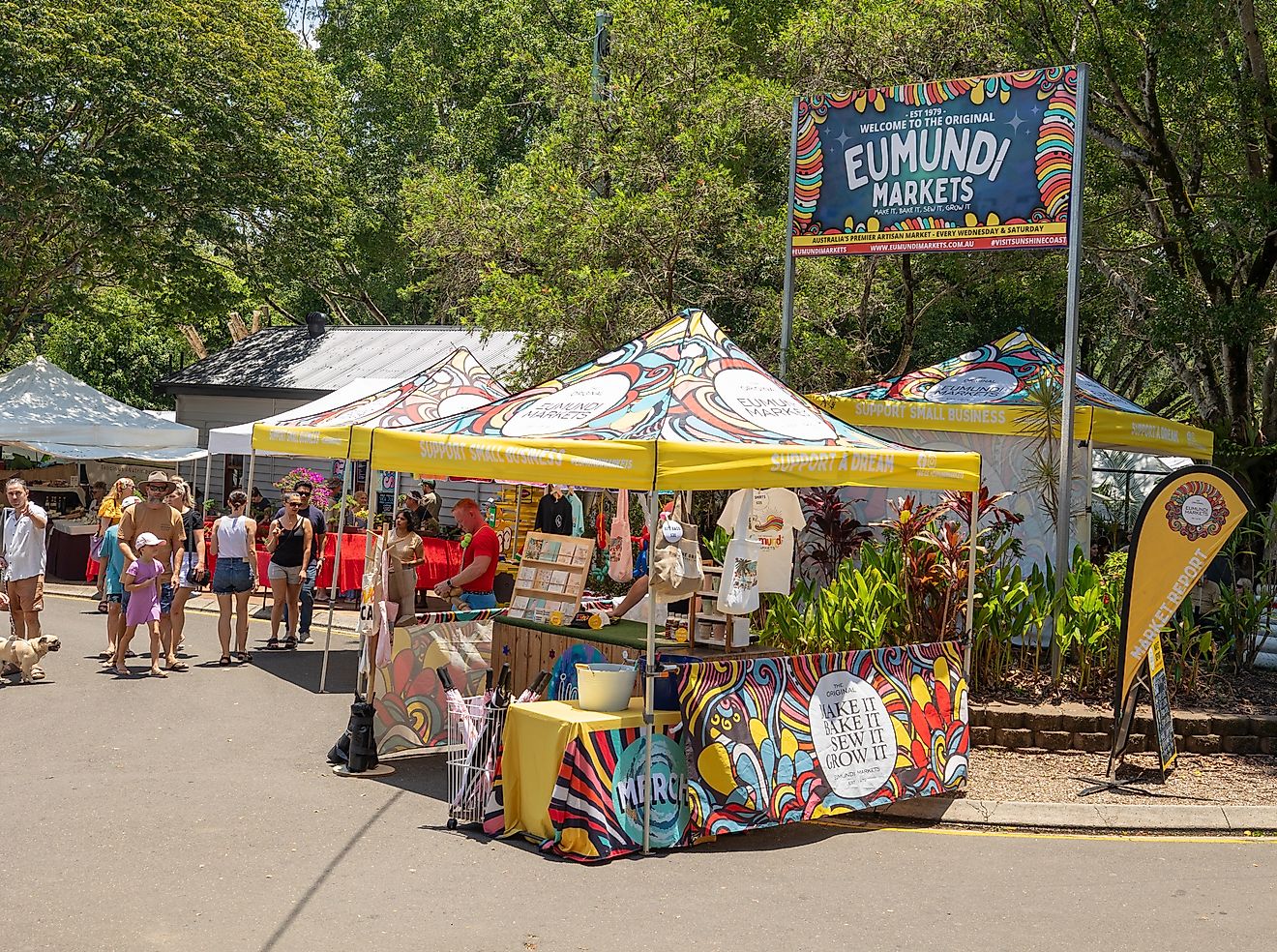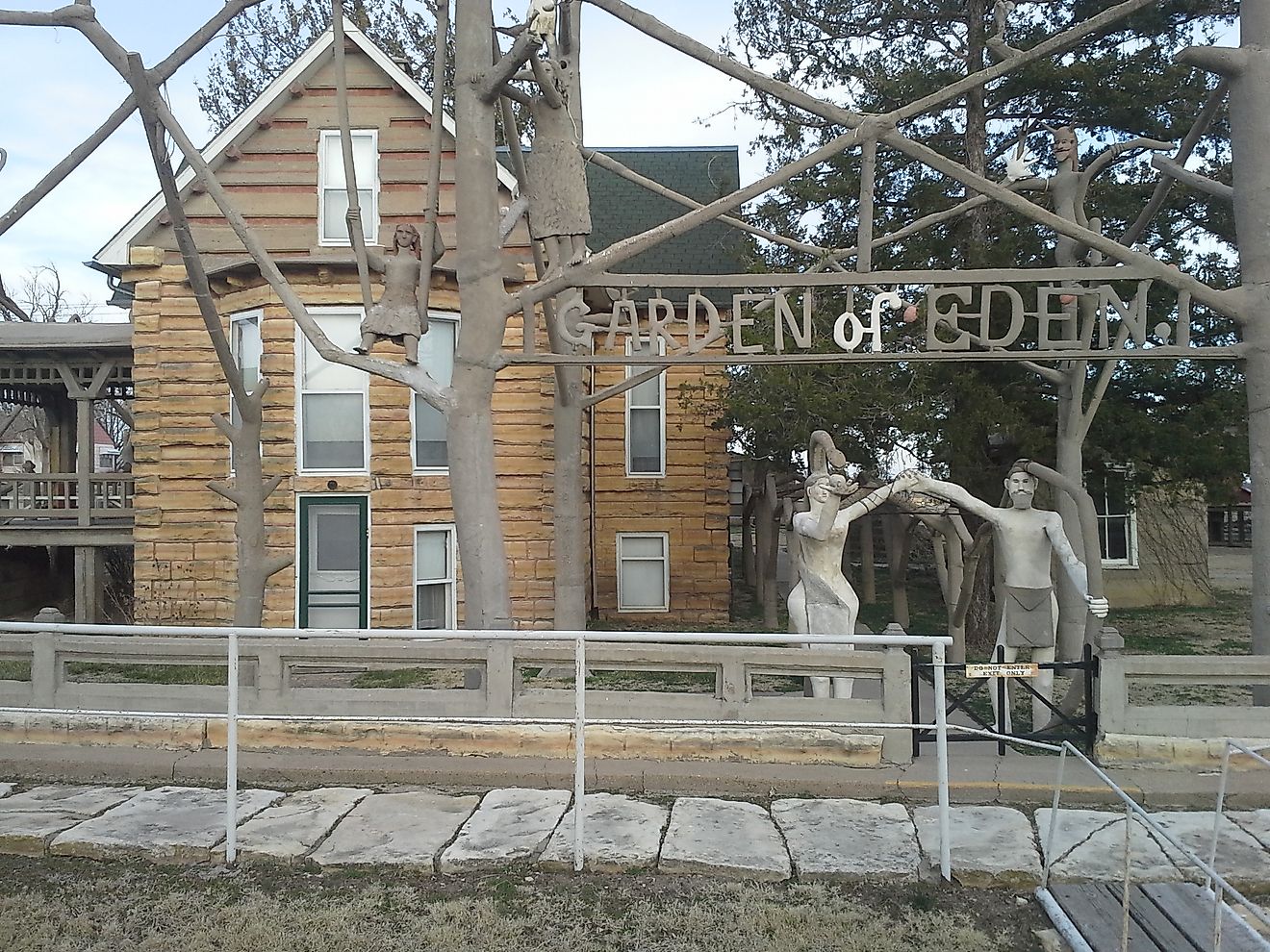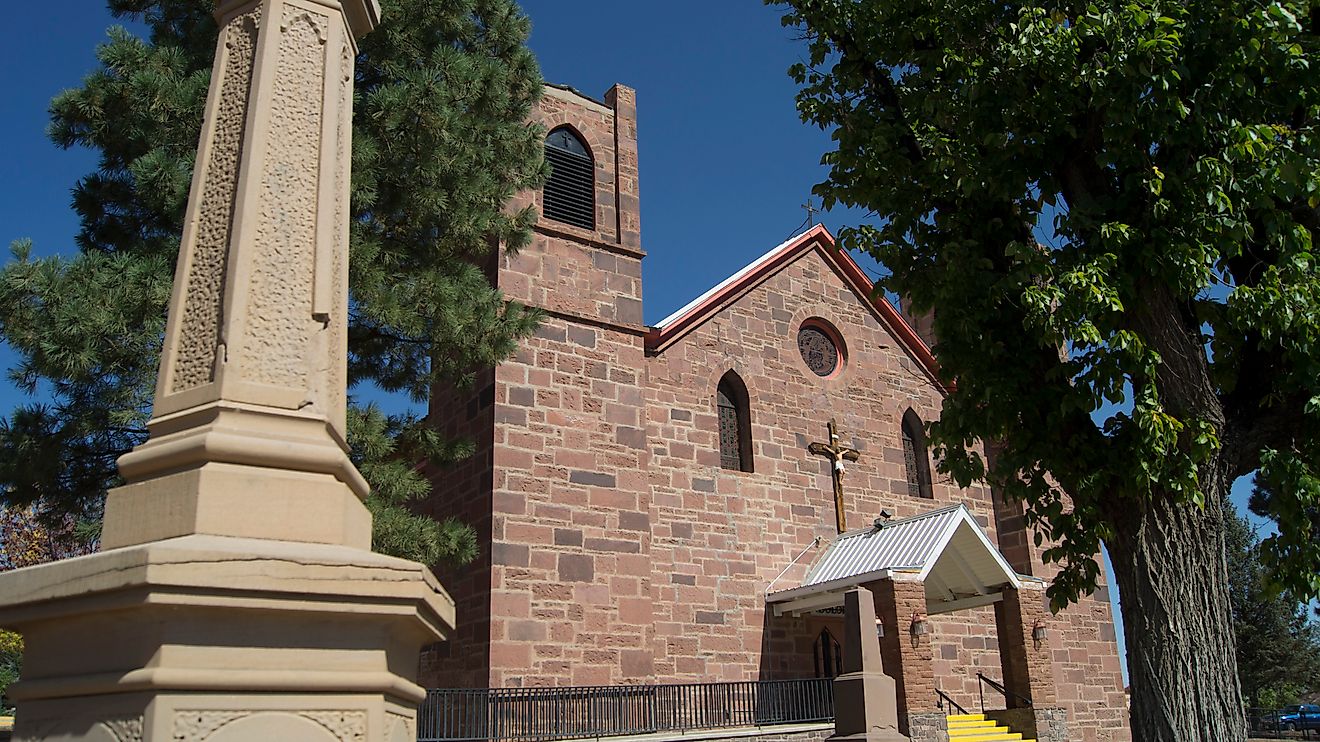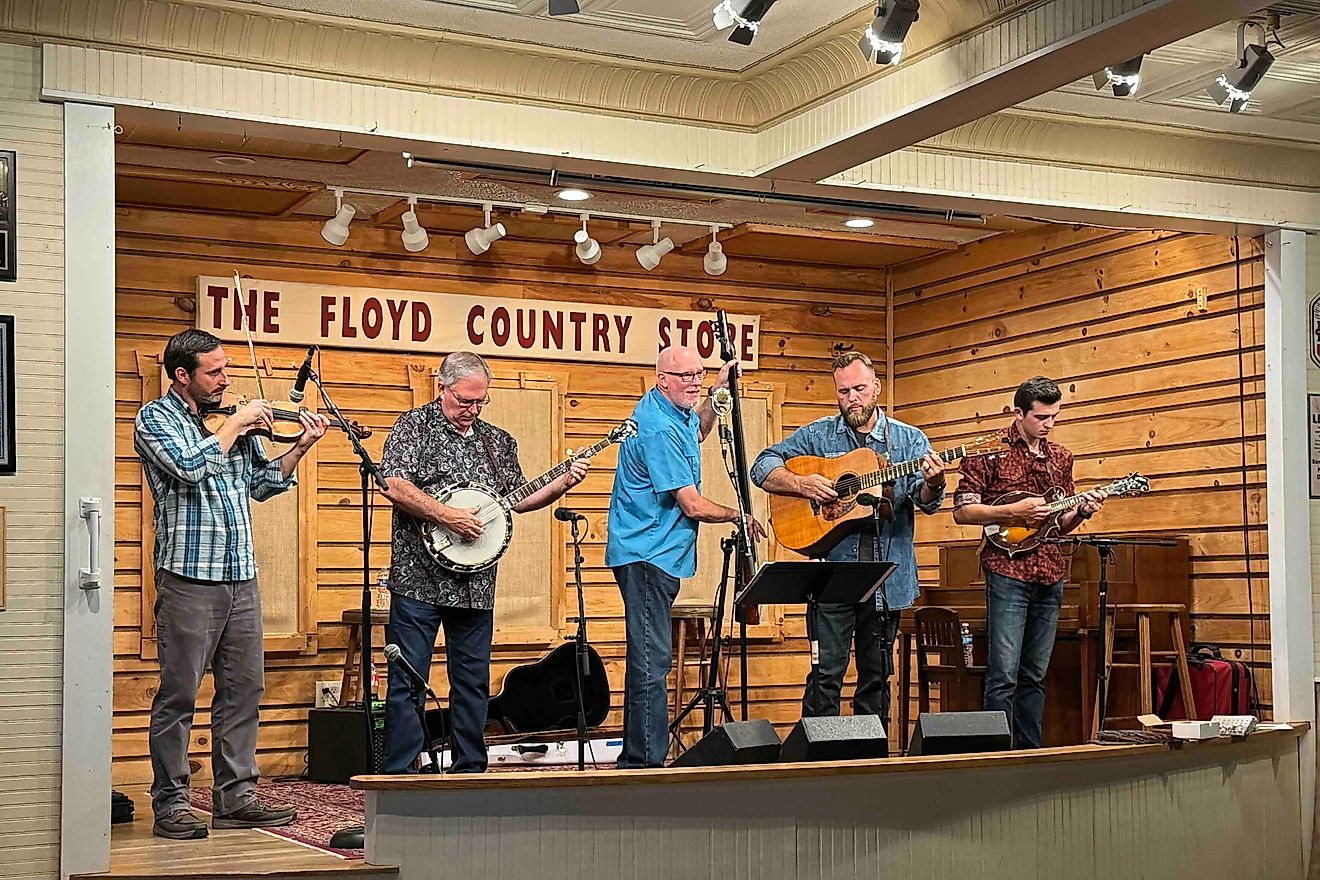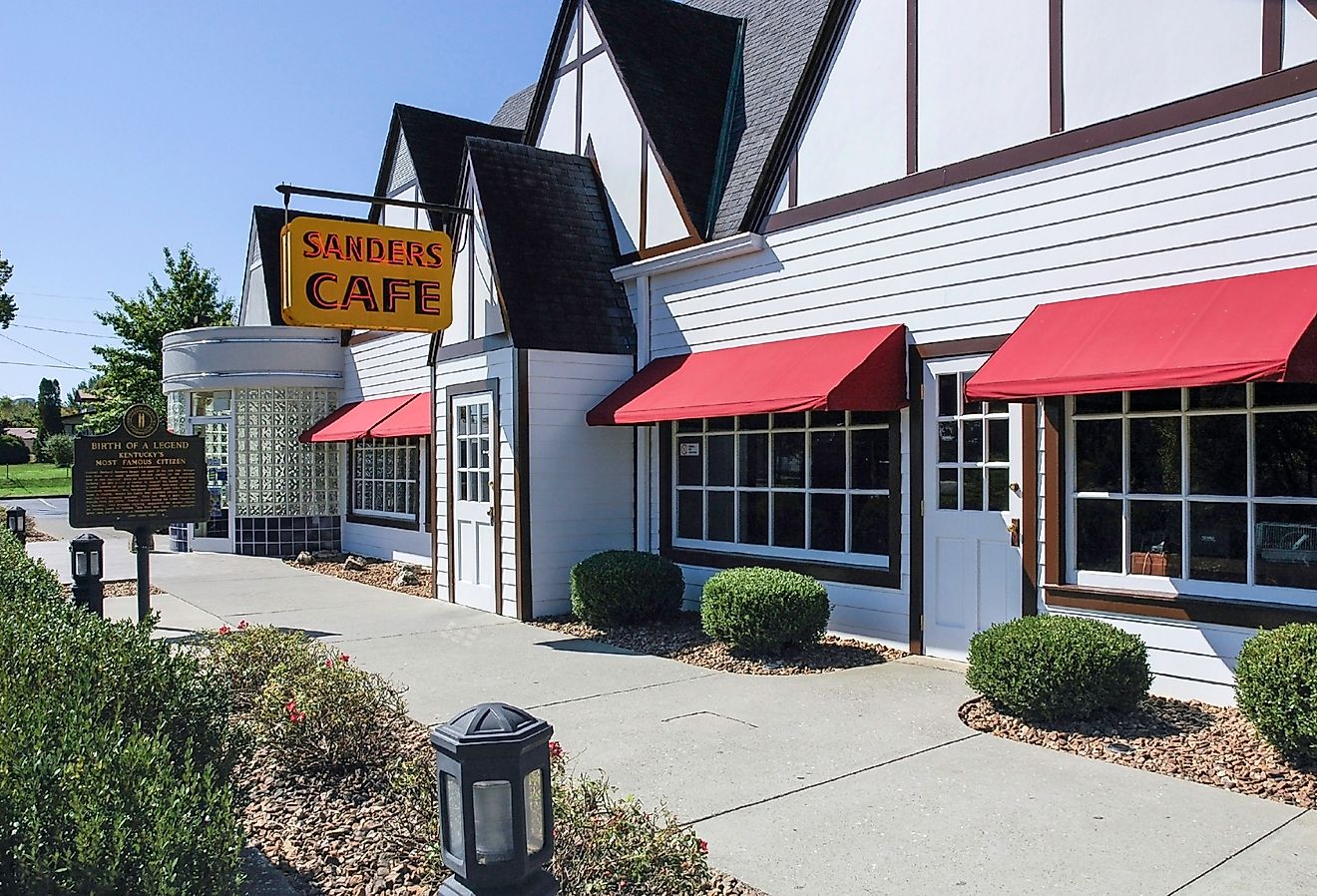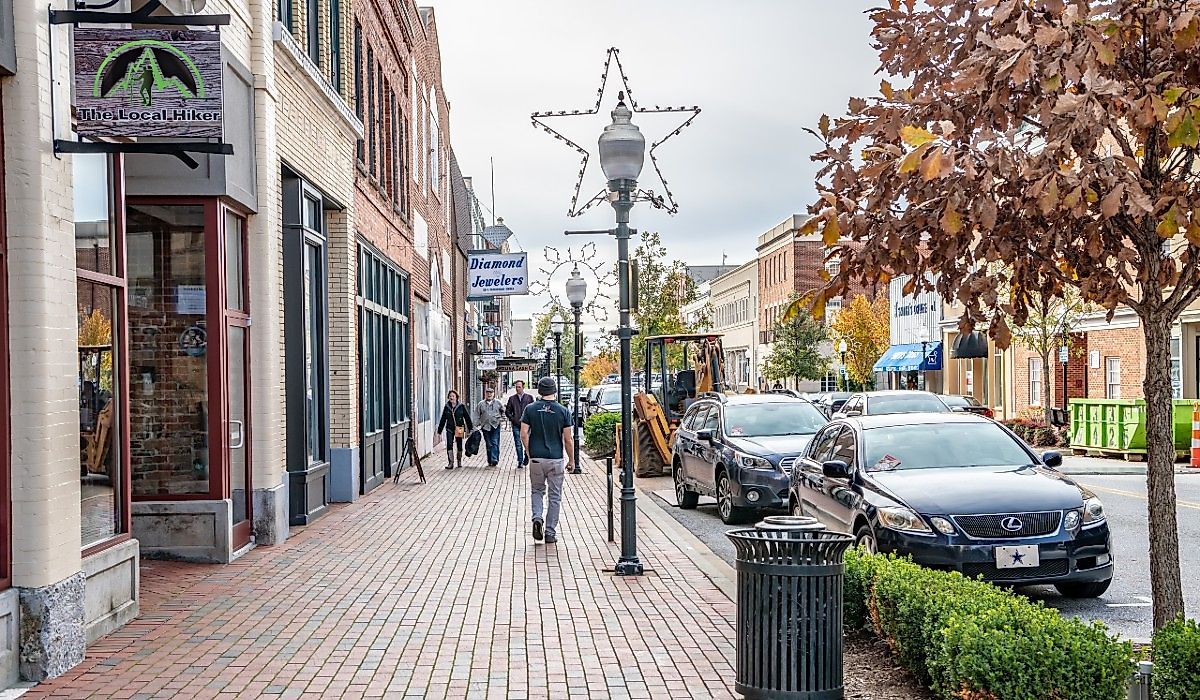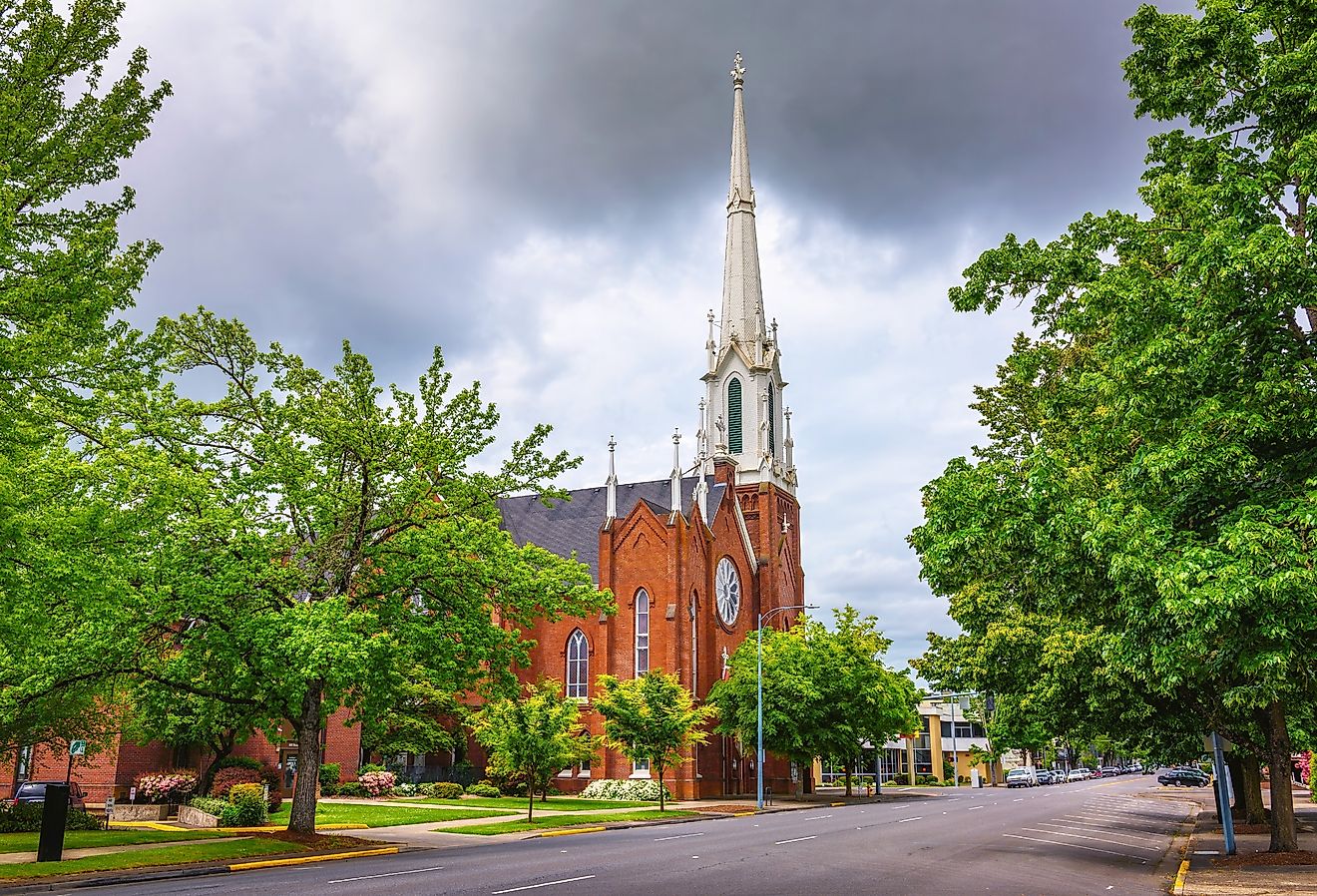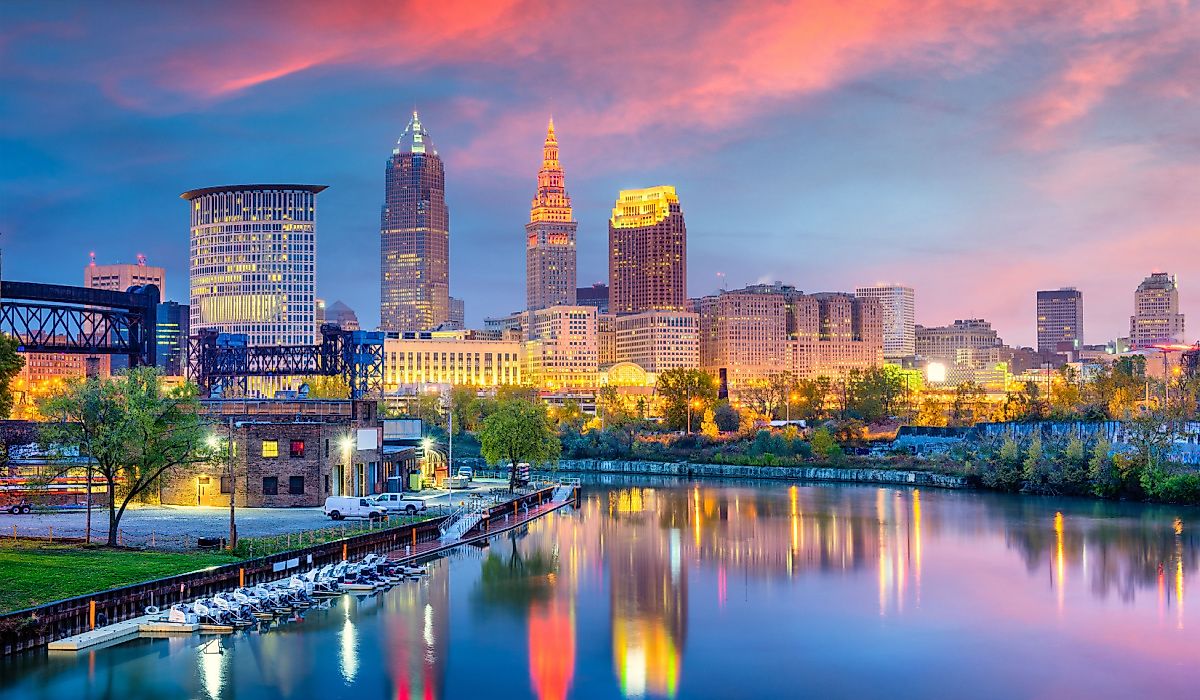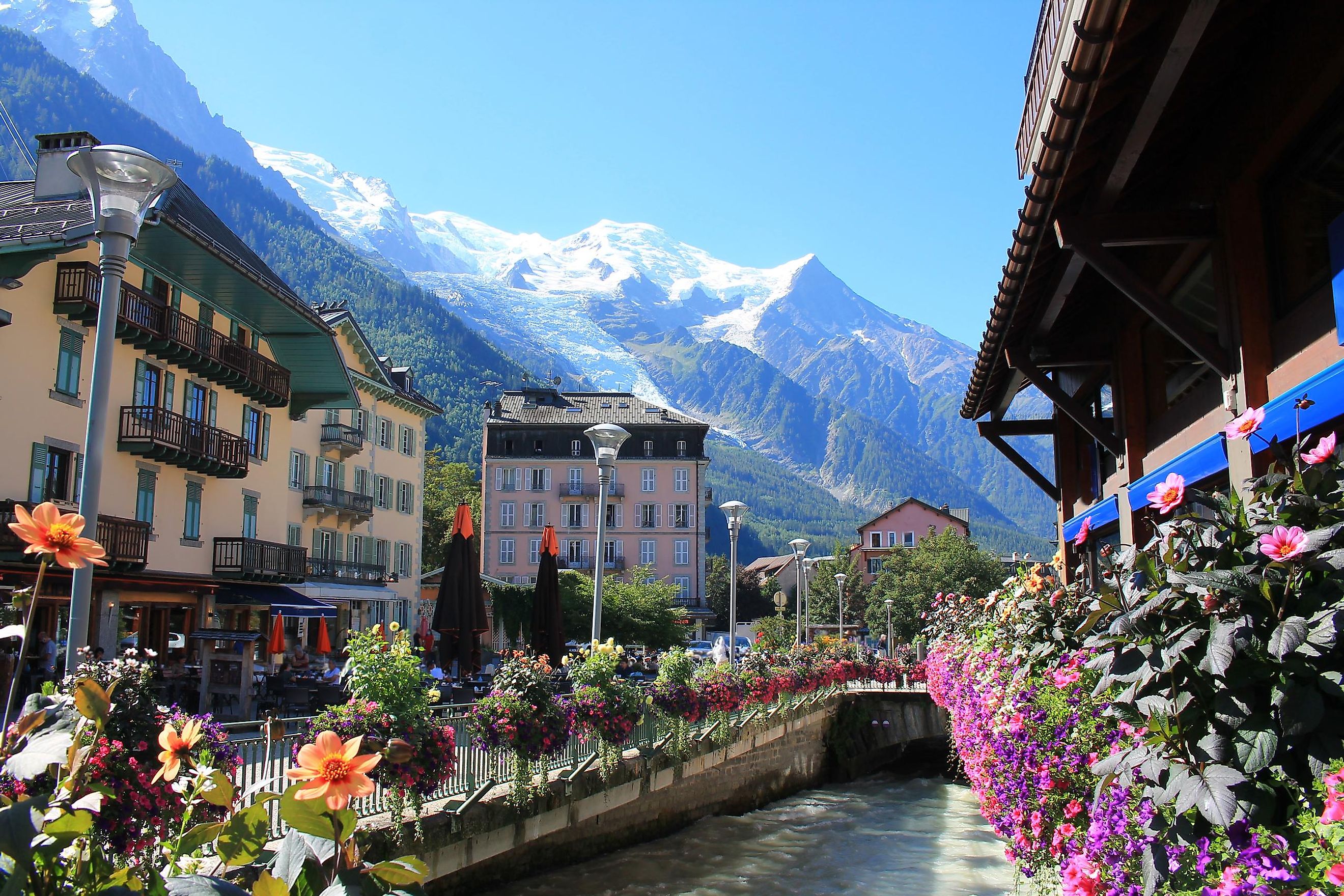
8 Best Small Towns In France For A Weekend Retreat
France, revered for its contribution to art, cuisine, and philosophy, is the world's most visited country and home to the Eiffel Tower, Louvre Museum, and Palace of Versailles. Its population of approximately 67 million people enjoys a climate that ranges from the temperate regions in the north and west to the Mediterranean warmth in the southeast. Most people who think of France think of Paris. However, France's small towns are a repository of the country's heart and soul and should be considered for those wanting a more intimate weekend retreat in the country. Here are the top picks.
Chamonix-Mont-Blanc
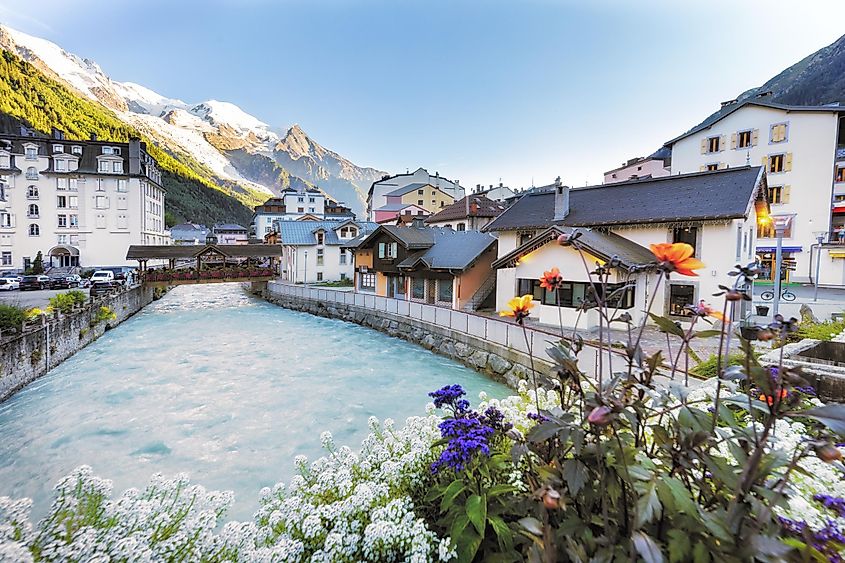
In the French Alps, Chamonix-Mont-Blanc (often shortened to Chamonix) is a resort town. It is surrounded by peaks, including the Mont-Blanc, the highest mountain in Western Europe. Chamonix made history as the site of the first Winter Olympics in 1924. At Hôtel Mont-Blanc, guests wake up to the sight of Mont-Blanc. After exploring the town, they can soak in the 5-star hotel's heated outdoor pool during their weekend getaway.
Mont Blanc has hiking in the summer and world-class skiing and snowboarding in the winter. It's a must-see for visitors to Chamonix. Accessible by a two-stage cable car, the Aiguille du Midi further brings visitors close to Mont Blanc. The cable car journey itself includes views of the French, Swiss, and Italian Alps. At the summit, the "Step into the Void" glass skywalk overlooks a 1,000-meter drop. Mer de Glace is the largest glacier in France and can be accessed via the Montenvers Railway. Here, visitors can explore ice caves carved into the glacier and learn about glacial formation at the Glaciorium Museum.
Gordes
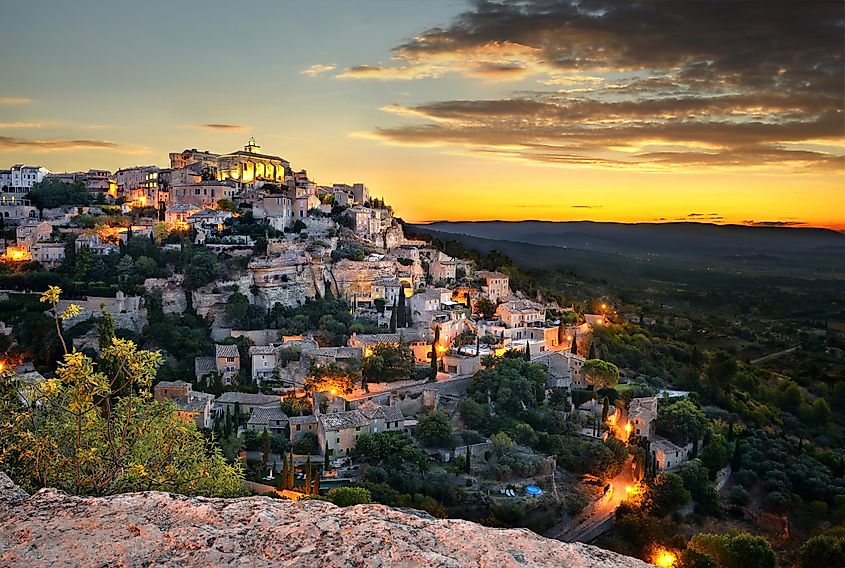
Gordes is a hilltop village in the Provence region of France. It has cobblestone streets, traditional stone houses, and ancient dry-stone walls. As a member of "Les Plus Beaux Villages de France" (The Most Beautiful Villages of France), Gordes offers a glimpse into the medieval and Renaissance eras. For an idyllic stay in Gordes, Les Bories & Spa is set on an eight-hectare estate of olive trees, cypresses, holm oaks, lavender, and aromatic gardens.
In Gordes, L’Eglise Saint-Fermin is a church dedicated to Saint Fermin. Visitors can admire the church's interior, which houses several art pieces and religious artifacts of significant historical value. Le Sentier des Ocres in Roussillon is a park known for its shades of red, orange, and yellow ochre cliffs, carved by water and wind over millennia. There are marked trails for all levels of hikers. The Abbaye Notre-Dame de Sénanque is a Cistercian abbey founded in the 12th century. The abbey is still active, with monks living and working per their ancient traditions. Guests can take guided tours of the abbey, and the surrounding lavender fields in the summer envelop the abbey in a blanket of purple.
Bonifacio
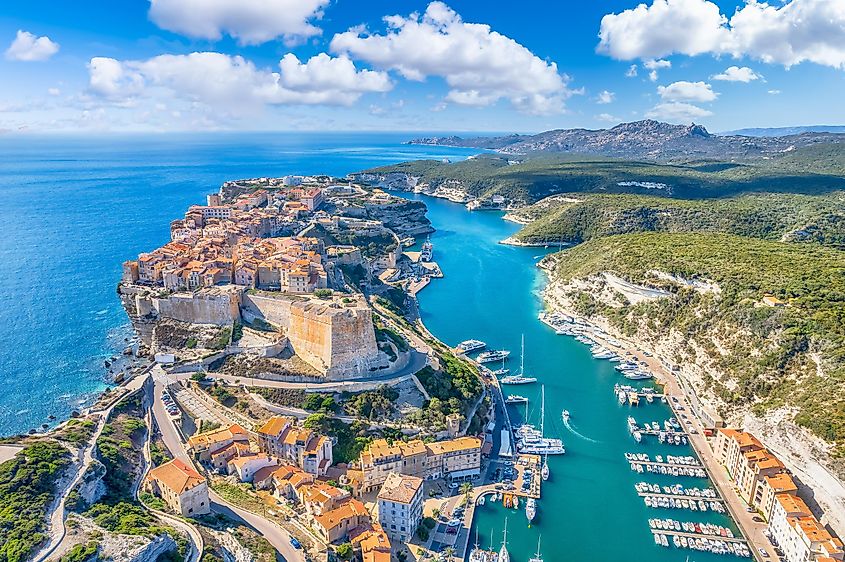
Bonifacio, France, is a town located on the southern tip of Corsica, perched atop white limestone cliffs that overlook the Mediterranean Sea. This town also has narrow cobblestone streets and ancient buildings that trace back to the 9th century when Boniface II of Tuscany founded it. Bonifacio's architecture blends Genoese and French influences. The town's landscape includes maquis shrubland, known for its aromatic herbs and wildflowers. The Cala di Greco Hotel has suites with uninterrupted views of Bonifacio's citadel and the sea, just five minutes from historic downtown.
The Genoa Gate is the main entrance to the old town of Bonifacio. This structure was constructed by the Genoese in the 13th century when they ruled over Corsica. Walking through the Genoa Gate visitors can explore the narrow, winding streets of the old town. Additionally, the Fortress of the Standard was a lookout and form of protection against invasions throughout centuries. Visitors can explore the ramparts, walk through ancient halls, and see the old garrison quarters. Beyond historical sites, Bonifacio National Park has various ecosystems, from marine areas with underwater sea life to cliffs and Mediterranean maquis. Visitors can enjoy hiking along the cliff-top trails, bird watching, discovering secluded beaches, and snorkeling in clear waters.
Saint-Émilion
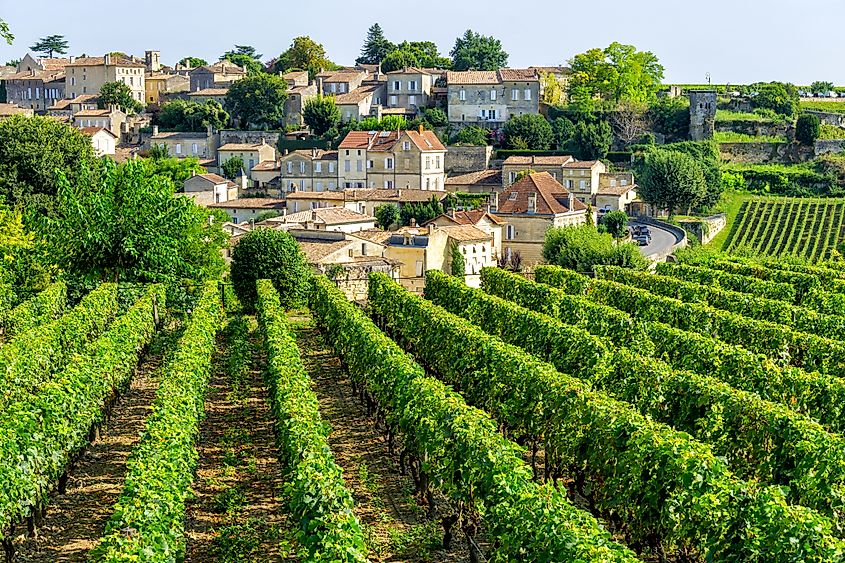
Saint-Émilion, in the Aquitaine region of southwestern France, is a UNESCO World Heritage Site on a limestone plateau. The town's layout, with its narrow, winding streets and squares lined with limestone buildings, evokes a bygone era. The surrounding landscape, a patchwork of vineyards and wineries, is deeply entrenched in wine culture that dates back to Roman times. In the heart of Saint-Émilion, Hôtel de Pavie is a place for guests to indulge in the region's wines and take in views over the village from the raised terrace.
La Grotte de Ferrand is an underground network beneath vineyards. These caves were used for mining and mushroom farming. Now, they are wine cellars. Tours often include an overview of the caves' formation, insights into the winemaking process, and, of course, wine tastings. Château Ausone is one of the most prestigious vineyards in Saint-Émilion, named after the Roman poet Ausonius who owned land in the area. Due to its small production volumes, visits are sought after and usually require bookings. Carved entirely out of a single block of limestone during the 12th century, the Saint-Émilion Monolithic Church is a testament to the skill and dedication of medieval builders. Guided tours educate on the church's construction. The church's bell tower can also be climbed.
Moustiers-Sainte-Marie
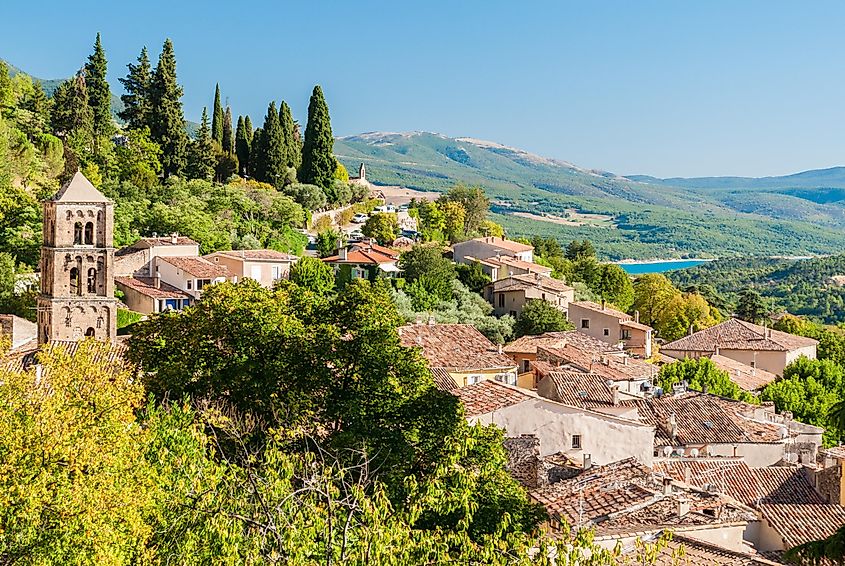
Moustiers-Sainte-Marie is located at the western entrance to the Gorges du Verdon in the Provence-Alpes-Côte d'Azur region of France. The 17th-century village has a backdrop of limestone cliffs and is split by a rushing mountain stream that cascades through its center. The village is distinguished by its star, suspended on a 225-meter-long chain high above between two cliffs. The Bastide de Moustiers in the town has rooms and suites that promise comfort and modern amenities.
The Chapel of Notre-Dame de Beauvoir is an ancient sanctuary high above Moustiers-Sainte-Marie. Accessed by a steep pathway lined with 262 stone steps, it has been a pilgrimage site for centuries. A less demanding attraction, The Musée de la Faïence teaches visitors about the craftmanship of faience, a fine, tin-glazed pottery. Visitors can admire the delicacy of the faience pieces here and engage in workshops. Known as the "Grand Canyon of Europe," the Gorges du Verdon has a turquoise river winding through cliffs. Visitors can go kayaking, paddleboarding, or electric boating on the waters of the Verdon River. There are also hiking trails along the rim.
Château-Chalon
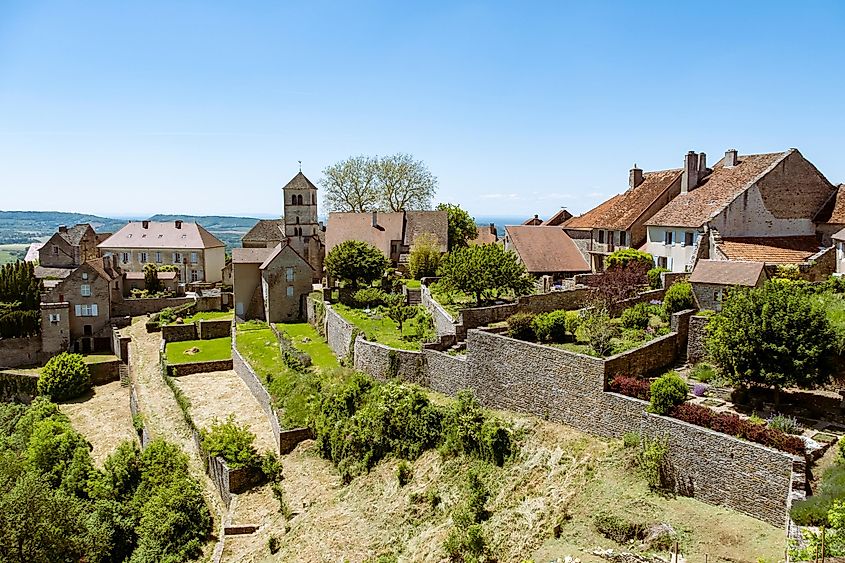
Château-Chalon is situated in the Jura department of eastern France. This small village is best known for its production of Vin Jaune ("Yellow Wine"), an esteemed wine made from the Savagnin grape variety, which thrives in the local microclimate. The town's history is intertwined with its winemaking tradition, dating back to the Middle Ages when monks began cultivating vines. The village's architecture includes stone houses with traditional Jurassian tiled roofs. Maison d'Eusebia, set in a 17th-century residence in Château-Chalon, has comfortable hotel rooms with historic decor. Guests are complemented by a glass of the village's famed Vin Jaune.
L'École d'Autrefois is a museum set within an old schoolhouse from the early 20th century. The classroom is preserved with period furnishings, educational materials, and even the teacher's lodgings. Another museum, The Maison de la Haute Seille takes a look at the local wine-making traditions, particularly the production of the Vin Jaune. The exhibits cover the geological, climatic, and human factors that contribute to the area's terroir. Wine tastings often complement a visit. Finally, Eglise Saint-Pierre de Chateau-Chalon is a 10th-century, Romanesque-style church on a hilltop location. Attending a service is highly recommended.
Riquewihr
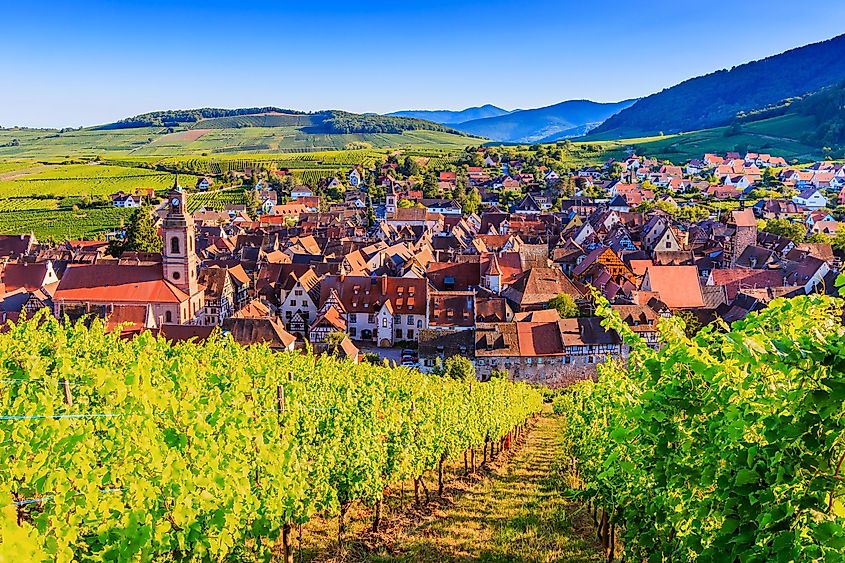
Riquewihr, located in the Alsace region of France, is surrounded by vineyards, which reflect a viticultural heritage that began in the Roman era. The village showcases 15th- to 17th-century buildings, with colorful half-timbered houses, ornate facades, and cobblestone streets. Riquewihr's fortified walls, which have safeguarded it through centuries, contribute to its reputation as a living museum of medieval architecture. Weekend guests at the J.L. Brendel accommodation in Riquewihr can stay in poetically-designed suites, a garden cottage, or a guest house.
Founded in 1639, Hugel et Fils is a family-owned establishment that has been producing some of the region's most esteemed wines for centuries. Visitors can explore the ancient cellars on tour, which concludes with a tasting. The Dolder Tower, built in the 13th century, was once a watchtower and gate, part of Riquewihr's defensive walls. Standing at the highest point of the town, it symbolizes the strategic importance and wealth Riquewihr enjoyed in medieval times. Guests can climb this tower and encounter its exhibits. The Marché de Noël (Riquewihr Christmas Market) is particularly special due to the town's medieval setting. From late November to December, visitors can browse stalls that sell handmade crafts, traditional Alsatian Christmas decorations, and local delicacies.
Giverny
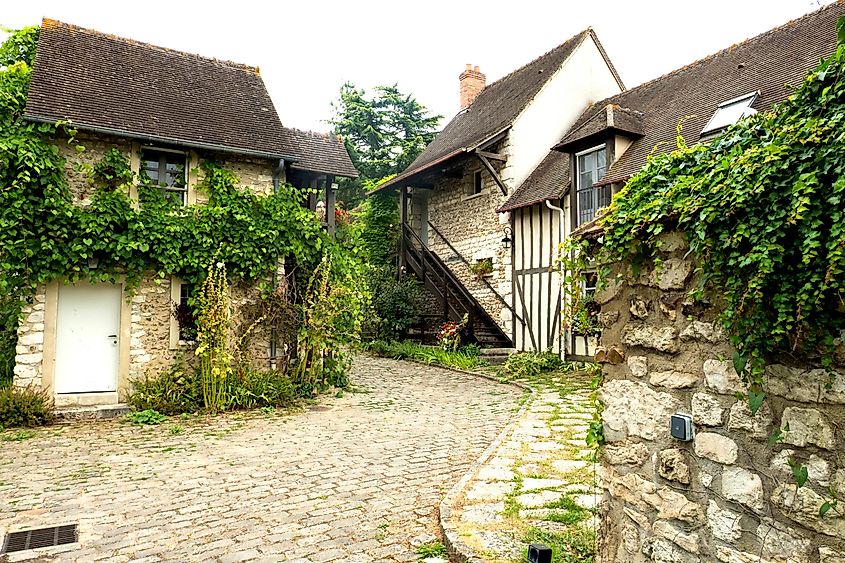
Giverny is a small village in the Normandy region of Northern France, most famous for being the residence of Claude Monet, one of the most celebrated impressionist painters. Situated on the bank of the River Seine, Giverny is at the edge of the Vexin plateau, which contributes to its vegetation and vibrant colors. The village has traditional Norman architecture, with stone and half-timbered houses adorned with ivy and surrounded by gardens. Nestled on the heights of Giverny, amidst woods and orchards, the Reserve has five garden-view bedrooms set within a 600 m2 building.
Claude Monet's residence, where he lived from 1883 until his death in 1926, is an attraction that feels like stepping into one of his paintings. Visitors can wander through Monet's pink stucco house, but the gardens are the true highlight: the Clos Normand Flower Garden in front of the house and the Japanese-inspired Water Garden across the road. A short walk away, The Museum of Impressionisms Giverny furthers the exploration of Impressionist art. It focuses not just on Monet but on the broader Impressionist movement. Finally, the medieval Sainte-Radegonde Church is an 11th-century church with Romanesque architecture named after a 6th-century Frankish queen and saint. It serves as the final resting place of Claude Monet, among other notable residents.
In Summary
While France's grandeur is often epitomized by the sights and sounds of Paris, French culture, history, and natural beauty is perhaps best experienced through its smaller towns. Chamonix-Mont-Blanc allows visitors to trace the footsteps of the first Winter Olympics, whereas Gordes has medieval architecture amidst a landscape of lavender. These towns, along with others like the historic Saint-Émilion, present an intimate and diverse exploration of France’s regional identities and make for favorable weekend escape destinations.
